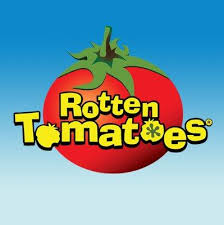Rotten Tomatoes has emerged as a cornerstone for movie lovers, critics, and casual viewers alike. Known for its distinct rating system, the platform provides a quick reference for assessing the quality and reception of films. In this article, we will explore the origins, functionality, and influence of rotten tomatoes on the film industry, as well as practical tips for using the site effectively.
What is Rotten Tomatoes?
Rotten tomatoes is an aggregator website that compiles movie reviews and assigns ratings based on the percentage of critics who recommend a film. Launched in 1998 by Senh Duong, the site initially sought to centralize movie ratings. Over the years, it has transformed into a comprehensive resource, including user reviews and extensive film information.
How Does Rotten Tomatoes Work?
The functionality of rotten tomatoes revolves around a straightforward formula to calculate its ratings. A film is classified as “fresh” if at least 60% of the reviews are positive. Conversely, films receiving less than 60% positive reviews are labeled “rotten.” The site prominently features two main scores: the Tomatometer, reflecting critic opinions, and the Audience Score, based on viewer ratings.
The Significance of the Tomatometer
The Tomatometer is vital for filmmakers and studios alike. A high score can greatly influence a film’s box office performance, as many audiences rely on these ratings to determine whether to see a movie. For example, a film with a score of 90% or higher is likely to draw a larger audience, while a score below 50% may discourage potential viewers.
The Role of Critics
Critics are essential in shaping the rotten tomatoes ratings. The site features a diverse group of critics, ranging from established publications to smaller independent voices. This variety ensures that a wide range of opinions is represented. However, some filmmakers argue that the system oversimplifies film criticism into a binary rating, ignoring the complexities of artistic evaluation.
User Reviews and Audience Scores
In addition to professional critics, rotten tomatoes encourages user-generated reviews and ratings. This feature allows for a more democratic perspective on a film’s reception, with audience scores sometimes differing significantly from critic scores. Understanding both can provide a more comprehensive picture of a film’s quality.
The Evolution of Rotten Tomatoes
Since its launch, rotten tomatoes has undergone several changes. The introduction of the Audience Score in 2000 allowed for greater user engagement. In 2018, the site introduced a “Want to See” feature, indicating how many users were looking forward to a film’s release. This addition enhanced the platform’s functionality and marketing potential.
Navigating Rotten Tomatoes Effectively
Using rotten tomatoes is a straightforward process. The homepage features current and popular films, along with their Tomatometer scores. Users can search for specific films or explore categories like “Top Movies,” “Upcoming Movies,” and “By Genre.”
To maximize your experience on rotten tomatoes, consider these tips:
- Utilize Filters: You can filter films by release year, genre, and rating to find options that match your interests.
- Read Individual Reviews: Explore critic reviews to gain detailed insights beyond just the scores.
- Assess Audience Feedback: Check the Audience Score and read user reviews for a broader perspective.
The Impact of Rotten Tomatoes on Filmmaking
The influence of rotten tomatoes extends beyond consumer choices; it significantly impacts filmmakers and the types of films produced. Studios may prioritize marketing films with higher predicted Tomatometer scores, leading to an emphasis on projects designed to appeal to critics.
This trend often results in studios focusing on specific genres or styles that typically perform well on the platform. Films that align with critical tastes tend to receive more support in terms of budget and promotion.
Controversies Surrounding Rotten Tomatoes
Despite its popularity, rotten tomatoes has faced various controversies. Critics argue that the binary rating system fails to capture the nuances of film critique. A film with a score of 59% might have numerous reviews praising its artistic merits, while a film rated 60% may not necessarily be significantly better.
Additionally, recent changes to how audience scores are calculated have sparked debates among users, with some feeling that these adjustments undermine the integrity of user reviews.
The Future of Rotten Tomatoes
As film consumption continues to evolve, rotten tomatoes will likely adapt as well. The rise of streaming services and shifts in viewing habits may influence how films are rated and reviewed. Furthermore, the integration of social media and user engagement is expected to shape the platform’s future.
Conclusion: The Role of Rotten Tomatoes in Modern Cinema
In conclusion, rotten tomatoes remains a crucial resource for anyone interested in films. While its unique rating system has its limitations, it provides valuable insights into movie reception. Whether you are a casual viewer or a dedicated cinephile, knowing how to navigate rotten tomatoes can enhance your film-watching experience.
As you explore the wealth of information available, remember that while the Tomatometer is a helpful tool, it should complement your own tastes and preferences. After all, film is an art form meant to be experienced, and every viewer’s interpretation can be just as valid as any critic’s opinion.
